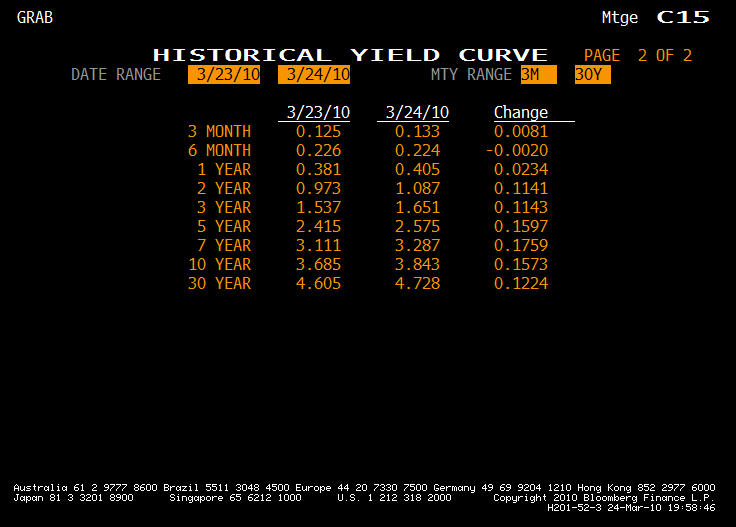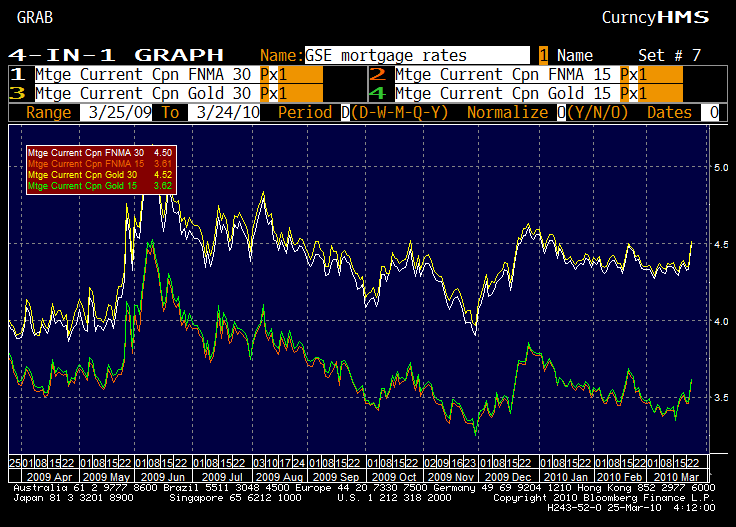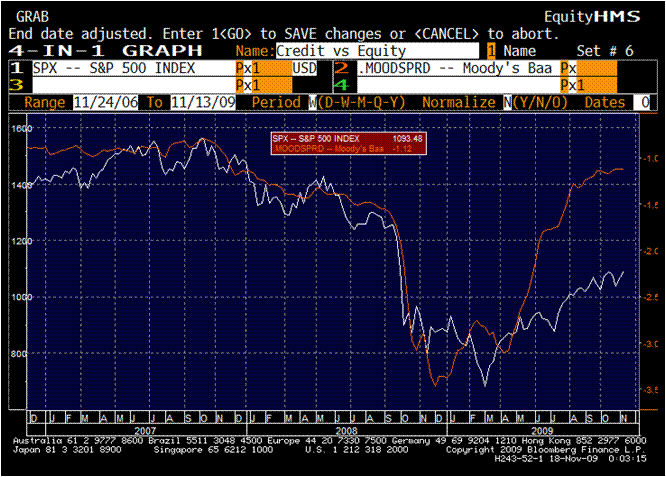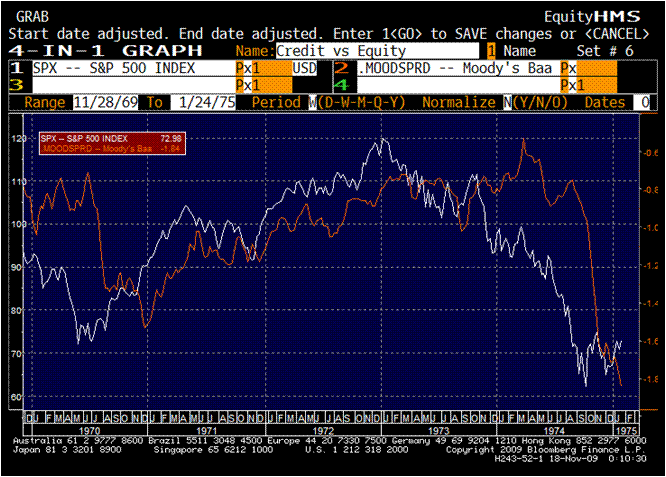Again, Greenspan’s comments are in italics.? Part 1 can be found here.? Greenspan’s full paper can be found here.
Part of the dynamic here is while leverage is increasing, and sham prosperity is growing, there are few that will argue against it, and those who do are regarded as shrill misfits.? In the short run, the powerful in society benefit from the growth of a credit bubble.
The evaporation of the global supply of short term credits within hours or days of the Lehman failure is, I believe, without historical precedent. A run on money market mutual funds, heretofore perceived to be close to riskless, was underway within hours of the Lehman announcement of default. The Federal Reserve had to move quickly to support the failing commercial paper market. Unsupported, trade credit withdrawal set off a spiral of global economic collapse within days. Even the almost sacrosanct fully collateralized repurchase agreement market encountered severe unprecedented difficulties.
We need to dig very deep into peacetime financial history to uncover similar episodes. The call money market, that era?s key short term financing vehicle, shut down at the peak of the 1907 panic, ?when no call money was offered at all for one day and the [bid] rate rose from 1 to 125%.?36 Even at the height of the 1929 stock market crisis, the call money market functioned, though rates did soar to 20%. In lesser financial crises, availability of funds in the long-term market disappeared, but overnight and other short-term markets continued to function.
It is easy to make too many assumptions… that markets that have never failed can’t fail.? To assume depressions can’t happen again.? Any market can become overlevered — ANY MARKET.? Further, collateralized lending has a great tendency to attract bad loans, because lenders overestimate the value of collateral.? Also, all short-term borrowing at banks carries considerable risk, particularly non-consumer funding, because there are no guarantees.
Given this virtually unprecedented period of turmoil, by what standard should reform of official supervision and regulation be judged? I know of no form of economic organization based on a division of labor, from unfettered laissez-faire to oppressive central planning, that has succeeded in achieving both maximum sustainable economic
growth and permanent stability. Central planning certainly failed and I strongly doubt that stability is achievable in capitalist economies, given the always turbulent competitive markets continuously being drawn towards, but never quite achieving, equilibrium (that is the process leading to economic growth).
It is not equilibrium that drives growth, but disequilibrium.? Excess demand drives supply.? Excess supply drives demand.? The concept of equilibrium in economics is almost useless, because the system is too noisy, and the tendency toward equilibrium far weaker than the creativity of mankind creating new products, new markets, new technologies, new needs, etc.
The aftermath of the Lehman crisis traced out a startlingly larger negative tail than most anybody had earlier imagined. I assume, with hope more than knowledge, that that was indeed the extreme of possible financial crisis that could be experienced in a market economy.
Again, the Great Depression was worse, but it would not be impossible to have a crisis worse than that.? People don’t like to think about these things, but jst because they are painful to think about does not mean they can’t happen.
Greenspan goes on to add that bank capital levels need to be raised, but does not note that on his watch, bank capital levels were reduced.? He also comments on how the government standing behind the banks rescued them, but does not comment on the moral hazard engendered by the government intervening.
The rates of return on assets, and equity (despite the decline in leverage, moved modestly higher during the years 1966-1982 owing to a rapid expansion in non-interest income, such as fiduciary activities, service charges and fees, net securitization income, (and later investment banking, and brokerage). Noninterest income rose significantly between 1982 and 2006 (increasing net income to equity to a near 15%) as a consequence of a marked increase in the scope of bank powers.
That in part reflected the emergence in April, 1987 of court sanctioned, and Federal Reserve regulated, ?Section 20? investment banking affiliates of bank holding companies. The transfer of such business is clearly visible in the acceleration of bank gross income originating relative to that of investment banks starting in 2000 (exhibit 15).
Bank profitability exploded after 1986 for several reasons:
- The Greenspan Put — recessions were never allowed to eliminate bad lending.
- Securitization — originating loans to sell to others can be far more profitable than holding them on balance sheet.
- Offering complex loans/services to corporations is more profitable.
- Offering complex loans/services to individuals is more profitable.
After wallowing in the backwaters of economics for years, ?too big to fail? has arisen as a major visible threat to economic growth. It finally became an urgent problem when Fannie Mae and Freddie Mac were placed into conservatorship on September 7, 2008. Prior to that date, U.S. policymakers (with fingers crossed) could point to the fact that Fannie and Freddie, by statute, were not backed by the ?full faith and credit of the U.S. government.? Market participants however, did not believe the denial, and consistently afforded Fannie and Freddie a special credit subsidy. On September 7, 2008, market participants were finally vindicated.
Greenspan and I can agree here.? There was always a “wink, wink” regarding the guarantees behind the GSEs.? The US Government would never let them fail in entire.
For years the Federal Reserve had been concerned about the ever larger size of our financial institutions. Federal Reserve research had been unable to find economies of scale in banking beyond a modest-sized institution. A decade ago, citing such evidence, I noted that ?megabanks being formed by growth and consolidation are increasingly complex entities that create the potential for unusually large systemic risks in the national and international economy should they fail.? Regrettably, we did little to address the problem.
Give Greenspan a little credit here — he did urge the slimming down of Fannie and Freddie.? But he did little to slim down the growing large banks.? Indeed, he approved the waivers that allowed for the growth in large banks prior to the repeal of Glass-Steagall, approved of the repeal of Glass-Steagall, and waived deposit-share limits on big bank mergers.
The solution, in my judgment, that has at least a reasonable chance of reversing the extraordinarily large ?moral hazard? that has arisen over the past year is to require banks and possibly all financial intermediaries to hold contingent capital bonds, that is, debt which is automatically converted to equity when equity capital falls below a certain threshold. Such debt will, of course, be more costly on issuance than simple debentures, but its existence could materially reduce moral hazard.
I doubt that will work, much as I like free market solutions.? To be effective, that would have to be a large fraction of the liability base.? I doubt we have that many buyers willing to take on “worst of equity and debt risks” at any reasonable yield premium.
However, should contingent capital bonds prove insufficient, we should allow large institutions to fail, and if assessed by regulators as too interconnected to liquidate quickly, be taken into a special bankruptcy facility. That would grant the regulator access to taxpayer funds for ?debtor-in-possession financing.? A new statute would create a panel of judges, who are expert in finance. The statute would require creditors (when equity is wholly wiped out) to be subject to statutorily defined principles of discounts from par (?haircuts?) before the financial intermediary was restructured. The firm would then be required to split up into separate units, none of which should be of a size that is too big to fail.
We can agree here as well.? Using the government as a DIP lender with big complex firms costs the taxpayers little, and makes the consequences fall on those who made the bad investments.
The Federal Reserve and other regulators were, and are, therefore required to guess which of the assertions of pending problems or allegations of misconduct should be subject to full scrutiny by, of necessity, a work force with limited examination capacity.? But this dilemma means that in the aftermath of an actual crisis, we will find highly competent examiners failing to have spotted a Madoff. Federal Reserve supervision and evaluation is as good as it gets even considering the failures of past years. Yet the banks still have little choice but to rely upon counterparty surveillance as their first line of crisis defense.
I’m sorry, but Madoff should have been detectable.? Buyer beware is still the first line of defense, but it should not be the only line of defense.
The global house price bubble was a consequence of lower interest rates, but it was long term interest rates that galvanized home asset prices, not the overnight rates of central banks, as has become the seeming conventional wisdom. In the United States, the house price bubble was driven by the low level of the 30 year fixed rate mortgage that declined from its mid-2000 peak, six months prior to the FOMC easing of the federal funds rate in January, 2001.
Greenspan then goes into a series of statistical arguments that attempt to show that long Treasury interest rates correlated more with mortgage rates than the Fed Funds rate was.? Thus, the Fed was not to blame for the housing bubble.? This misses several points.
- The Fed exerted a a degree of suasion over the long end of the curve.
- The FOMC kept short rates low for a long time, and though long rates moved less, still, they moved in the direction of short rates.
- Mortgage hedgers forced long rates lower given the negative convexity (short optionality) of the market.
- The Fed had oversight over the banking system.
- Mortgages became shorter in their effective length as the bubble grew.
The presence of abundant Fed liquidity swamped the markets, and led to low spreads on risky instruments (the Great Moderation).? Greenspan must take responsibility for this, after all he accepted the good side of it while times were good.
To my knowledge, that lowering of the federal funds rate nearly a decade ago was not considered a key factor in the housing bubble. Indeed, as late as January 2006, Milton Friedman, historically the Federal Reserve?s severest critic, in evaluating the period of 1987 to 2005, wrote, ?There is no other period of comparable length in which the Federal Reserve System has performed so well. It is more than a difference of degree; it approaches a difference of kind.?
Friedman was not the Fed’s severest critic.? He accepted its existence.? Many would rather have the Fed done away with, because of the inherent dishonesty of fiat money.? Why does the Fed get to create something that must be accepted as valuable to everyone else?? It is a form of coin-clipping at best.
Greenspan also misses John Taylor’s point with respect to policy being too low for too long.? It is not as if the Taylor Rule uses any asset variables for policy purposes (though a better model might do so).? But the interest rates that the model generates would have an impact on asset prices, and the willingness to build homes, many of which would be excess.
Yes, there were global problems here, with the Chinese over-providing liquidity to the US.? But as I argued at RealMoney at the time, the Fed could have fought that and run an inverted yield curve for some time.? They did not do it, but removed liquidity very slowly.
But the notion of an effective ?systemic regulator? as part of a regulatory reform package is ill-advised. The current sad state of economic forecasting should give governments pause on the issue. Standard models, other than those that are heavily add-factored, could not anticipate the current crisis, let alone its depth. Indeed, models rarely anticipate recessions, unless again, the recession is add-factored into the model structure.
I agree that there is no good way to create a systemic risk regulator, because the Fed creates most of the systemic risk.? Who will regulated the Fed?? Should that not be Congress?
But, I am sorry, the crisis was anticipated by many of us.? Here is the secret, Alan: the area receiving the greatest increase in debt is the area where systemic risk is growing.? Finance is a mature industry.? Large increases in debt are likely bubbles.? After all, given that the accounting rules allow risky loans to recognize credit margins as paid, in the short run it always pays to write risky loans, until illiquidity kills the lender.
=–==–==-=-=-=-=-=-
This is the end of this short series.? Greenspan is a bright guy trying to preserve his legacy, tattered as it is.? The Fed Funds rate had huge impact over the whole economy during his tenure, as he was aggressive in providing liquidity, and led us into the eventual liquidity trap that Bernanke now has to deal with.
fully
33 Greenspan, Alan. Technology and Financial Services. Before the Journal of Financial Services Research
and the American Enterprise Institute Conference, April 14, 2000.
34 Yields on riskless longer maturities can fall below short-term riskless rates if tight money persuades
investors that future inflation will be less.
35 Hugo B?nziger, chief risk officer at Deutsche Bank. Financial Times, November 5, 2009.
19
collateralized repurchase agreement market encountered severe unprecedented
difficulties.
We need to dig very deep into peacetime financial history to uncover similar
episodes. The call money market, that era?s key short term financing vehicle, shut down
at the peak of the 1907 panic, ?when no call money was offered at all for one day and the
[bid] rate rose from 1 to 125%.?36 Even at the height of the 1929 stock market crisis, the
call money market functioned, though rates did soar to 20%. In lesser financial crises,
availability of funds in the long-term market disappeared, but overnight and other shortterm
markets continued to function.









 I like to review books, and I will do it whether I get compensation or not.?? Unlike most reviewers, I read the books that I review, unless I indicate otherwise.? I have read this book.
I like to review books, and I will do it whether I get compensation or not.?? Unlike most reviewers, I read the books that I review, unless I indicate otherwise.? I have read this book.




